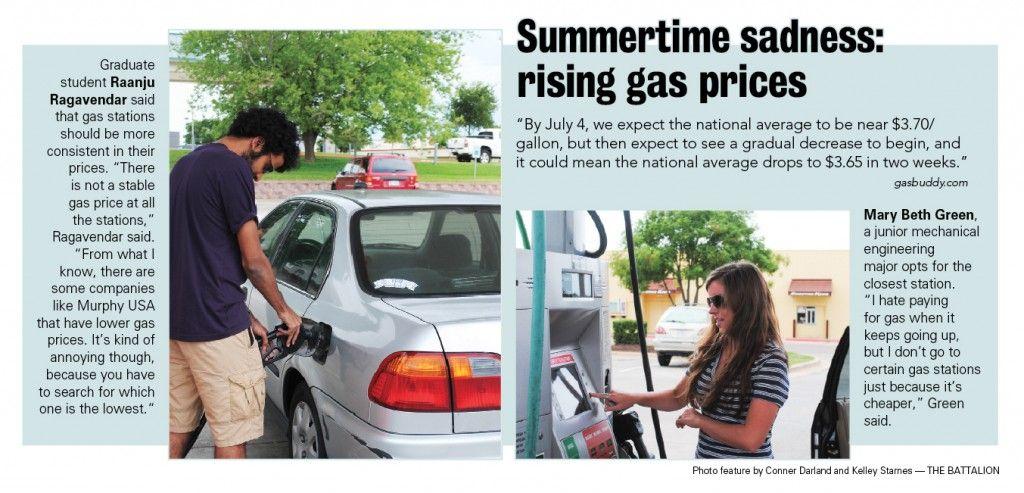Rising Gas Prices Impact Mid-Hudson Valley Residents

Table of Contents
Increased Commute Costs and Their Ripple Effects
The daily commute is a major expense for many in the Mid-Hudson Valley. Rising gas prices are making it increasingly difficult for people to afford their daily trips to work or school. This increased financial burden ripples through the community, affecting various aspects of residents' lives.
-
Increased financial strain on households: Higher fuel costs directly reduce disposable income, forcing families to cut back on essential expenses like groceries and healthcare. Budgeting for gas is becoming a major stressor for many.
-
Longer commutes due to carpooling or public transport reliance: To combat the increased cost, many are turning to carpooling or public transportation. However, this often results in longer, less convenient commutes, impacting productivity and work-life balance.
-
Reduced discretionary spending due to higher transportation costs: With more money allocated to fuel, less is available for entertainment, dining out, and other non-essential activities, impacting local businesses that rely on this spending.
-
Potential for job losses due to unaffordable commutes: In extreme cases, the cost of commuting can become unsustainable, forcing individuals to consider job changes or even unemployment. This has significant consequences for both individuals and the local economy.
-
Increased demand for fuel-efficient vehicles: The rising gas prices are driving demand for more fuel-efficient cars and alternative transportation options, influencing purchasing decisions and potentially impacting the used car market.
Impact on Local Businesses and the Economy
The rising cost of fuel is not only affecting individuals but also significantly impacting local businesses in the Mid-Hudson Valley. Transportation costs for goods and services are escalating, leading to increased prices for consumers and creating a challenging economic climate.
-
Increased costs of goods and services: Businesses are passing on the increased fuel costs to consumers, resulting in higher prices for everything from groceries to restaurant meals. This contributes to the overall inflation experienced by residents.
-
Reduced consumer spending due to higher prices: As consumers face higher prices, they tend to reduce their overall spending, creating a negative feedback loop that impacts businesses’ profitability.
-
Challenges for small businesses with higher delivery and transportation costs: Small businesses, particularly those relying on deliveries or transporting goods, are particularly vulnerable to these rising costs, potentially impacting their viability.
-
Potential job losses in businesses struggling to absorb rising fuel costs: Businesses unable to absorb the increased fuel costs may be forced to reduce staff or even close, leading to job losses and further economic hardship in the region.
-
Impact on tourism and local events due to higher travel costs: Higher transportation costs can deter tourism and reduce attendance at local events, impacting businesses that rely on visitor spending.
Exploring Mitigation Strategies and Solutions
While the situation is challenging, there are steps individuals and the community can take to mitigate the effects of rising gas prices. A multi-pronged approach is needed to address this issue effectively.
-
Utilizing public transportation options: Expanding and improving public transportation networks is crucial to provide affordable and convenient alternatives to driving.
-
Implementing carpooling arrangements: Carpooling can significantly reduce fuel consumption and commuting costs for individuals and families.
-
Exploring alternative transportation methods like biking or walking: For shorter distances, biking or walking are environmentally friendly and cost-effective options.
-
Improving fuel efficiency of vehicles: Maintaining vehicles properly and driving efficiently can help to reduce fuel consumption.
-
Advocating for government policies promoting sustainable transportation: Supporting policies that promote public transportation, fuel efficiency, and alternative transportation modes is crucial for long-term solutions.
-
Exploring energy conservation measures at home and in businesses: Reducing energy consumption at home and in businesses can indirectly reduce reliance on fossil fuels and lower overall energy costs.
Role of Government and Community Initiatives
Government initiatives and community programs can play a crucial role in assisting residents and businesses cope with rising gas prices. Targeted support can make a significant difference.
-
Subsidies for public transportation: Government subsidies can make public transportation more affordable and accessible to residents.
-
Investment in infrastructure for alternative transportation modes: Investing in cycling infrastructure, electric vehicle charging stations, and other alternative transportation options is essential.
-
Tax breaks for fuel-efficient vehicles: Incentivizing the purchase of fuel-efficient vehicles can help reduce overall fuel consumption in the region.
-
Community-based ride-sharing programs: Community-based initiatives can help to facilitate carpooling and ride-sharing, reducing individual transportation costs.
Conclusion
Rising gas prices pose significant challenges for Mid-Hudson Valley residents, impacting both individual budgets and the local economy. The combined effects of increased commute costs, higher prices for goods and services, and the strain on local businesses highlight the severity of this issue. Understanding the various aspects of this problem is crucial to finding effective solutions. The impact of rising gas prices on the Mid-Hudson Valley necessitates collective action. Learn more about available resources and strategies to mitigate the impact of rising gas prices on your life and your community. Let's work together to find solutions to this pressing issue impacting the Mid-Hudson Valley.

Featured Posts
-
 S Sh A Gotovyat Novye Sanktsii Protiv Rossii Senat Usilivaet Davlenie
May 22, 2025
S Sh A Gotovyat Novye Sanktsii Protiv Rossii Senat Usilivaet Davlenie
May 22, 2025 -
 Making Virtual Meetings More Effective Googles Strategies
May 22, 2025
Making Virtual Meetings More Effective Googles Strategies
May 22, 2025 -
 Vid Nato Chi Ni Analiz Politichnoyi Situatsiyi V Ukrayini
May 22, 2025
Vid Nato Chi Ni Analiz Politichnoyi Situatsiyi V Ukrayini
May 22, 2025 -
 Dexter New Blood Blu Ray Steelbook Revealed A Collectors Guide
May 22, 2025
Dexter New Blood Blu Ray Steelbook Revealed A Collectors Guide
May 22, 2025 -
 Rethinking Otter Conservation A Turning Point For Wyomings Wildlife
May 22, 2025
Rethinking Otter Conservation A Turning Point For Wyomings Wildlife
May 22, 2025
